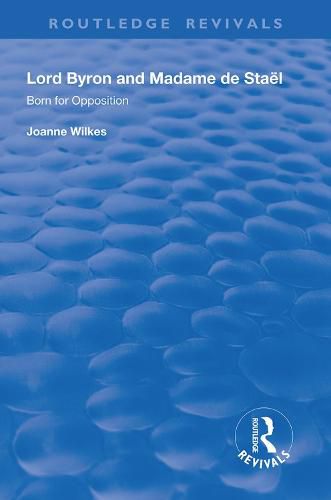Readings Newsletter
Become a Readings Member to make your shopping experience even easier.
Sign in or sign up for free!
You’re not far away from qualifying for FREE standard shipping within Australia
You’ve qualified for FREE standard shipping within Australia
The cart is loading…






Published in 1999. Lord Byron and Madam de Stael made a great impression on Europe in the throes of the Napoleonic Wars, through their personalities, the versions of themselves which they projected through their works, and their literary engagement with contemporary life. However, the strong links between them have never before been explored in detail.
This pioneering study looks at their personal relations, from their verbal sparring in Regency society, through the friendship which developed in Switzerland after Byron left England in 1816, to Byron’s tributes to Mme de Stael after her death. It concentrates on their literary links, both direct responses to each other’s works, and the copious evidence of shared concerns. The study deals with their treatment of gender, their grappling with the possibilities for heroic endeavour, their engagement with the social and political situations of Britain, France and Italy, and their conceptions of the role of the writer.
Although Byron will need no introduction, Mme de Stael’s standing as a French romantic writer of the first rank is made plain by the strong impact of her writings on the English Poet.
$9.00 standard shipping within Australia
FREE standard shipping within Australia for orders over $100.00
Express & International shipping calculated at checkout
Published in 1999. Lord Byron and Madam de Stael made a great impression on Europe in the throes of the Napoleonic Wars, through their personalities, the versions of themselves which they projected through their works, and their literary engagement with contemporary life. However, the strong links between them have never before been explored in detail.
This pioneering study looks at their personal relations, from their verbal sparring in Regency society, through the friendship which developed in Switzerland after Byron left England in 1816, to Byron’s tributes to Mme de Stael after her death. It concentrates on their literary links, both direct responses to each other’s works, and the copious evidence of shared concerns. The study deals with their treatment of gender, their grappling with the possibilities for heroic endeavour, their engagement with the social and political situations of Britain, France and Italy, and their conceptions of the role of the writer.
Although Byron will need no introduction, Mme de Stael’s standing as a French romantic writer of the first rank is made plain by the strong impact of her writings on the English Poet.